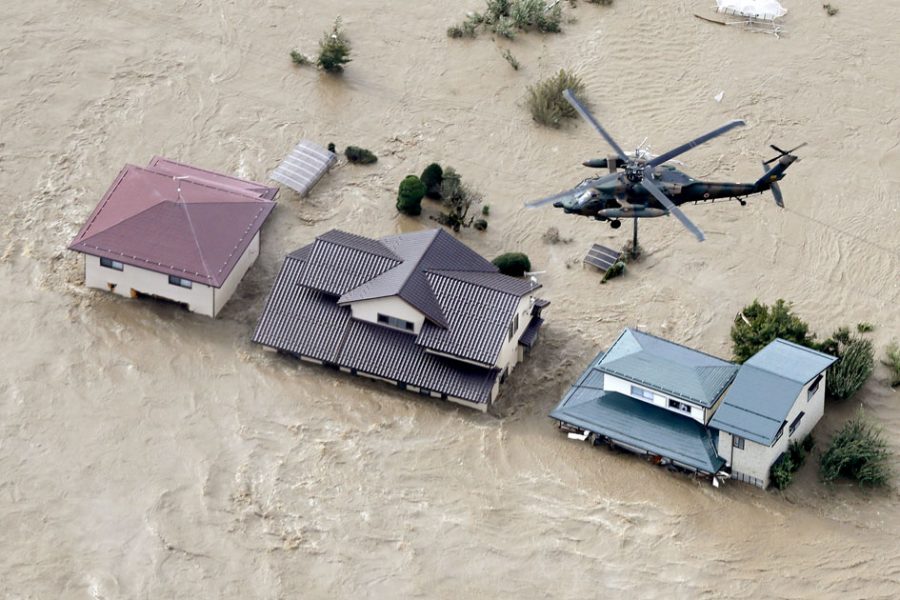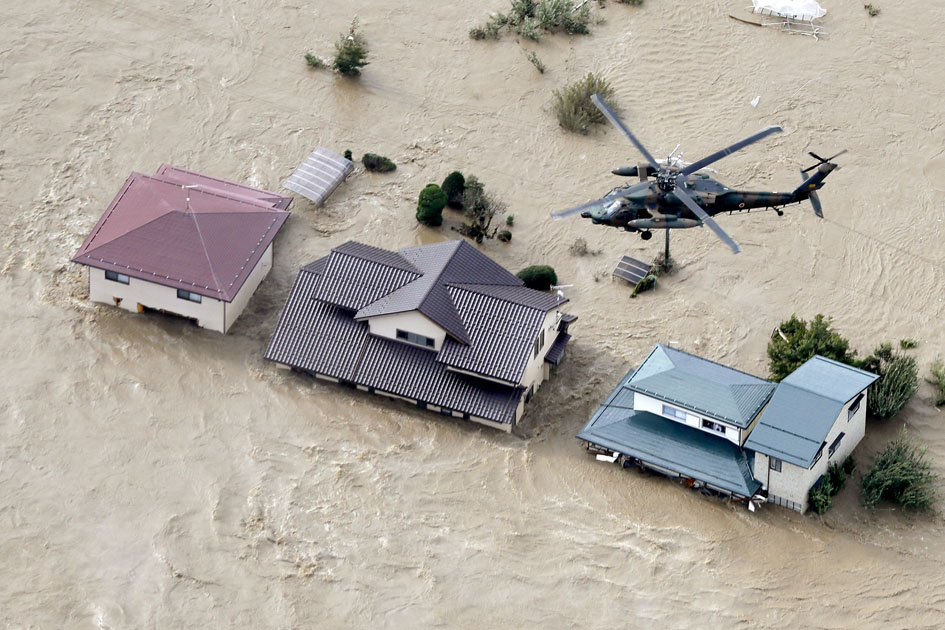
Japan Sends in Thousands of Troops after Massive Typhoon Hammers Tokyo
TOKYO – Japan sent tens of thousands of troops and rescue workers on Sunday to save stranded residents and fight floods caused by one of the worst typhoons to hit the country in recent history, which killed 18 people and briefly paralyzed Tokyo. There were also 13 people missing, public broadcaster NHK said, as Typhoon […]

TOKYO – Japan sent tens of thousands of troops and rescue workers on Sunday to save stranded residents and fight floods caused by one of the worst typhoons to hit the country in recent history, which killed 18 people and briefly paralyzed Tokyo.



There were also 13 people missing, public broadcaster NHK said, as Typhoon Hagibis left vast swaths of low-lying land in central and eastern Japan inundated and cut power to almost half a million homes.
Landing restrictions at Tokyo’s Narita and Haneda airports were lifted but more than 800 flights were canceled for the day, NHK said, as were some Shinkansen bullet train services to the worst-hit areas.
Authorities lifted rain warnings for the Kanto region around a becalmed Tokyo, where stores reopened and many train lines resumed operations, but they warned there was still the risk of rivers in eastern Japan overflowing and inflicting fresh damage.





Prime Minister Shinzo Abe convened an emergency meeting of relevant ministers and sent the minister in charge of disaster management to the affected areas. He offered condolences to the families of those who were killed and said the government was working to save people’s lives and property.
“The government will do everything in its power to cooperate with relevant agencies and operators working to restore services as soon as possible,” Abe said. The government had also set up a task force to deal with the damage, NHK reported.
Some 27,000 members of Japan’s self-defense forces as well as firefighters, police and coast guard members were sent to rescue stranded people in central Japan’s Nagano prefecture and elsewhere, the government said.
NHK said the full extent of the widespread damage was only beginning to emerge because many areas remained under water.












Some 425,000 homes were without power, the government said, reviving fears of a repeat of the weeks-long power outages suffered after another typhoon hit east of Tokyo last month.
In Fukushima, north of the capital, Tokyo Electric Power Co reported irregular readings from sensors monitoring water in its Fukushima Daiichi nuclear plant overnight. The plant was crippled by a 2011 earthquake and tsunami.
FLOODS, LANDSLIDES IN JAPAN
Hagibis, which means “speed” in the Philippine language Tagalog, made landfall on Japan’s main island of Honshu on Saturday evening and headed out to sea early on Sunday, leaving behind cloudless skies and high temperatures across the country.
NHK showed fields and vast residential areas in parts of central and eastern Japan covered in brown water, with some of the worst damage caused by Chikuma river in Nagano prefecture.


Military helicopters airlifted stranded people from homes near the river, some cradling their children, after they were trapped by water reaching the roofs of their houses.
The first floor of a large aged care home in Nagano city was shown under water.
Rescuers took residents from another flooded aged care facility by inflatable boats and carried them on their backs to safety. They also searched for survivors in homes destroyed in landslides near Tokyo’s suburbs and in Fukushima prefecture, NHK showed.
Authorities at one point issued evacuation advisories and orders for more than 6 million people across Japan as the storm unleashed the heaviest rain and winds in years. Close to 150 injuries have been reported so far, NHK said.
The storm, which the government said could be the strongest to hit Tokyo since 1958, brought record-breaking rainfall in many areas, including the popular resort town of Hakone, which was hit with 939.5 mm (37 inches) of rain over 24 hours.
The Japan Meteorological Agency had issued the highest alert level for 12 prefectures, warning of the potential for once-in-decades rain totals, but lifted them early on Sunday.
Just last month, another strong storm, Typhoon Faxai, destroyed or damaged 30,000 houses in Chiba, east of Tokyo, and caused extensive power outages.

The Rugby World Cup match between Namibia and Canada in Kamaishi on Sunday was canceled, although the crucial Japan-Scotland match was set to go ahead. Two matches were canceled on Saturday.
Formula One Grand Prix organizers had also canceled all practice and qualifying sessions scheduled for Saturday.
(Reporting by Makiko Yamazaki, Kiyoshi Takenaka and Chang-Ran Kim; Additional reporting by Ritsuko Shimizu; Editing by Shri Navaratnam and Paul Tait)
